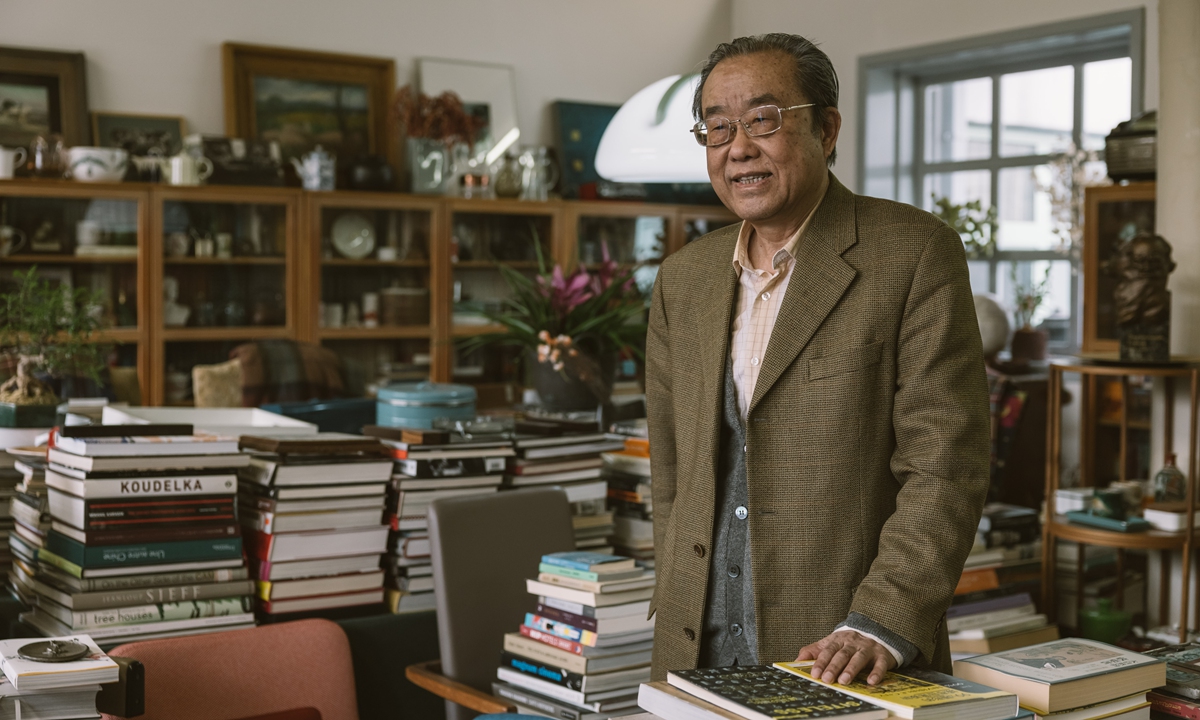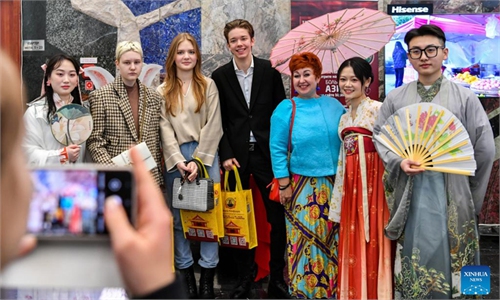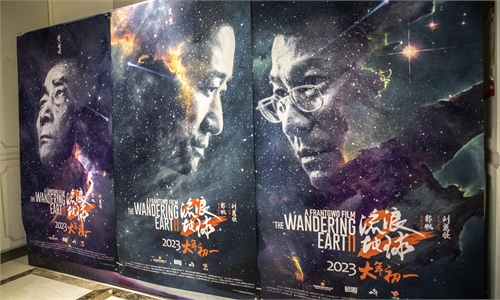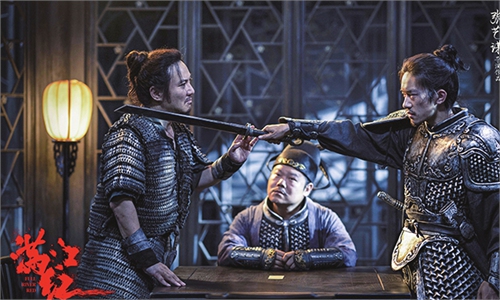ARTS / CULTURE & LEISURE
Traditional Chinese music mirrors the values and philosophy of China
A harmonious tune

Tian Qing Photo: Li Hao/Global Times
Editor's Note:At the just-concluded two sessions, namely the National People's Congress (NPC) and the National Committee of the Chinese People's Political Consultative Conference (CPPCC national committee), many NPC deputies and CPPCC members in the culture section proposed further promoting cultural confidence and strengthening the global influence of China's flourishing civilization.
With the rise of guochao, or China Chic, many activities about facets of traditional Chinese culture such as Chinese folk music have trended on social media, making a big wave among young Chinese.
Meanwhile, amid the fast development of the internet, more folk musicians are conveying the beauty of traditional Chinese music through livestreaming performances, including Folk Music Ensemble "I Love You China," a program co-launched by the Global Times and short-video platform Douyin that has attracted many folk music experts and received tens of millions of views.
What is the charm of traditional Chinese music and the values it bestows? How can traditional and folk music win more followers in the new era? The Global Times interviewed Tian Qing, a venerable musicologist and a scholar at the China Central Institute for Culture and History, to tell the story of "China's Rhyme."
At a cultural salon on Chinese music, Tian shared his understanding on the subject with the audience.
He pointed out that the unique charm of orthodox Chinese music lies in its tranquility and harmony. Compared with the indulgent music in the West, traditional Chinese music is a means of self-cultivation that highlights the harmony between humanity and the nature as well as physical and mental harmony.
"The ultimate pursuit of Chinese music is 'harmony,' which is also the core value and highest embodiment of Chinese culture," Tian told the Global Times.
He added that ancient Chinese, especially philosophers represented by Confucius, Mencius and Laozi, attached great importance to music.
"According to Confucianism, our Chinese ancestors concluded that rituals and music are what make a society stable, orderly and full of vitality," he said.
"Ritual" uses status and order to set people apart, while music allows people to find common ground as it is an art form that anyone can understand, appreciate and empathize with, which in turn contributes to "harmony."
Tian emphasized that by understanding Chinese music, people abroad can come to understand the spirit and values of China.
Integration and influence
Tian introduced that the history of Chinese folk music can be traced back to the Period of the Five Legendary Rulers (c.2600BC-c.2070BC), while its great integration took place during the Han Dynasty (206BC-AD220), when the royal emissary Zhang Qian traveled westward on a mission of peace and opened an overland route linking the East and the West.
This journey greatly contributed to cultural exchanges, including the introduction of musical instruments and music from Central Asia and the western regions to the Central Plains. Through the continuous inheritance and innovation by musicians of various ethnic groups, this music gradually merged with the local music of the Central Plains, becoming folk music sought after by people of all classes.
He also noted that Chinese folk music, like the court music of the Tang Dynasty (618-907), had a profound influence on the Korean Peninsula, Japan and nations in Southeast Asia. "Song of King Lanling Entering the Battlefield" became the Gagaku, the ancient court music of Japan that is still regarded as a national treasure by the Japanese.
Improved inheritance
According to Tian, Chinese folk music has a natural vitality. For example, many rural areas in Northwest China such as Shaanxi Province still retain their original way of life, providing sustenance to original folk music. Now, the most urgent task is to protect this valuable cultural heritage.
As an expert dedicated to the protection of China's intangible cultural heritage, Tian has organized a lot of significant cultural and musical exchanges in many countries.
He recalled that at a Chinese intangible cultural heritage gala held in Japan's National Theater in 2007, the audience was shocked and amazed to learn that the guqin (a traditional Chinese stringed instrument) used in the performance was made during the Tang Dynasty.
He told the audience that the year the guqin was made, the legendary Tang Dynasty poets Li Bai and Du Fu were 55 years and 44 years old, and that the eminent Chinese monk Jianzhen established the Toshodaiji Temple in Nara just three years after its creation. The explanation won a fully respect of all the audience in the hall.
"Only by keeping the soul of Chinese music can we innovate better," he said, adding that he is pleased to see more young Chinese singers incorporate traditional Chinese music into their works.
"[This is] keeping the spirit of Chinese folk music while bestowing it with new vitality," he noted.




